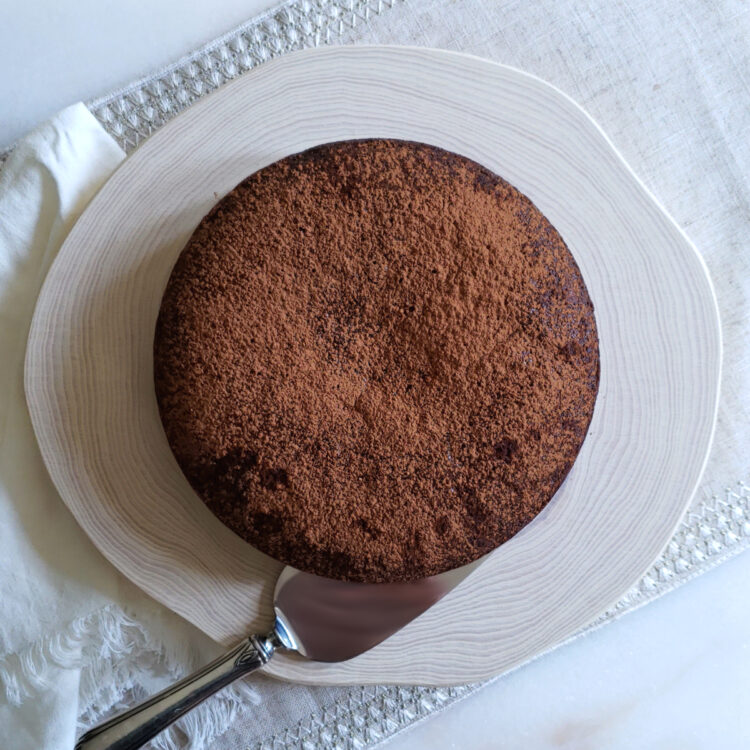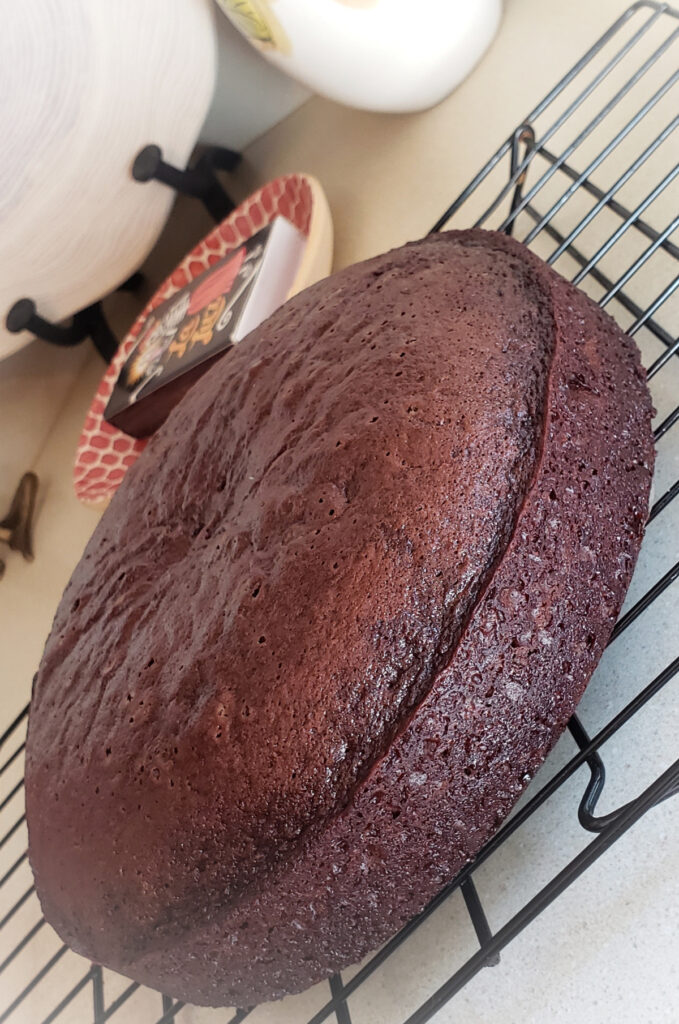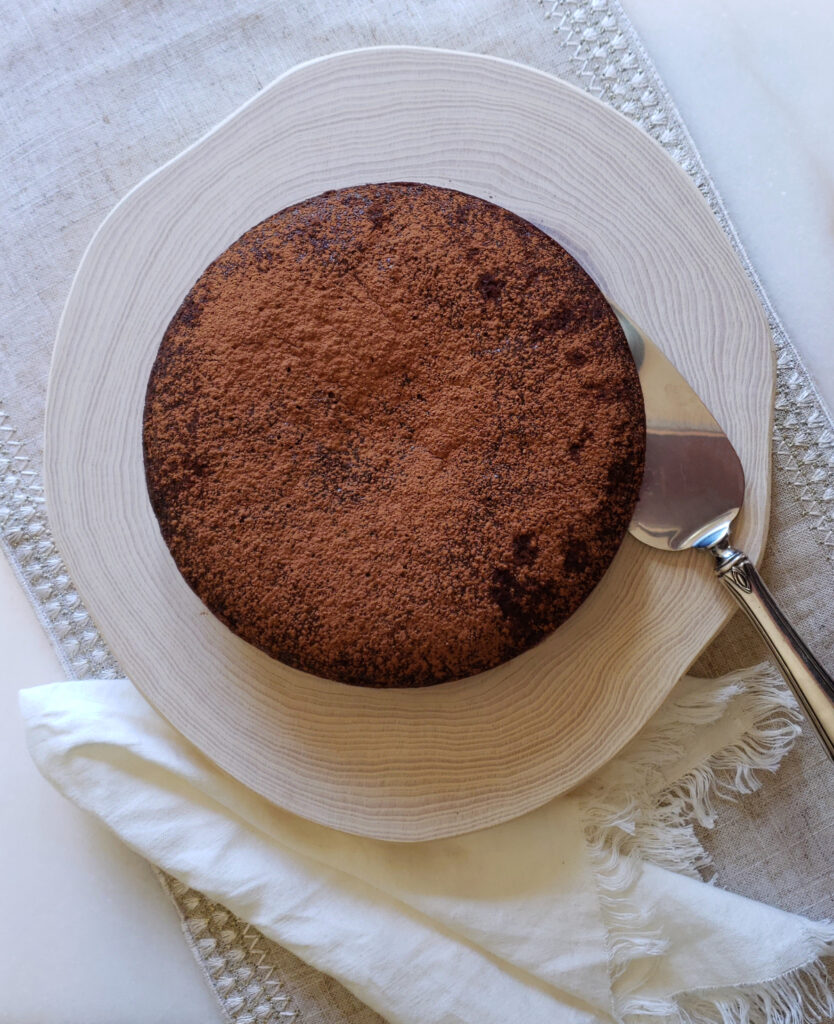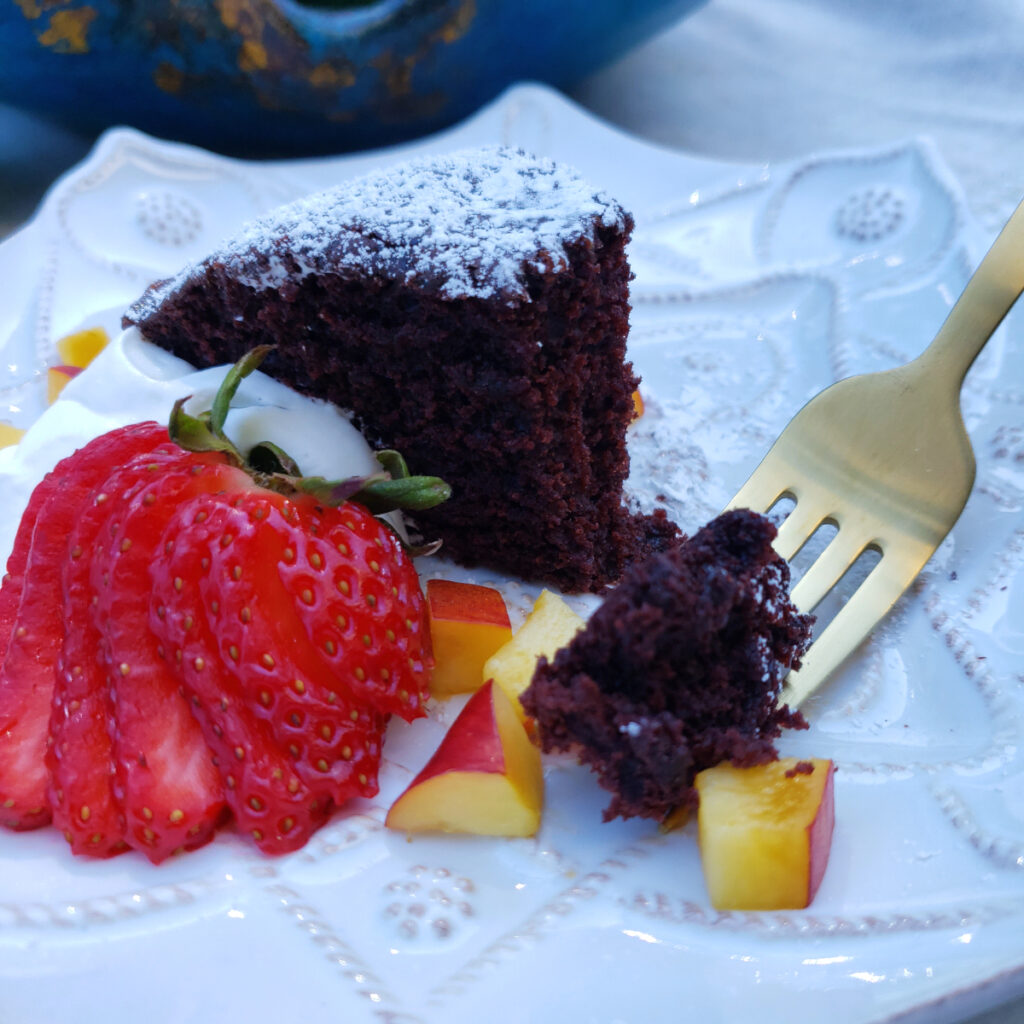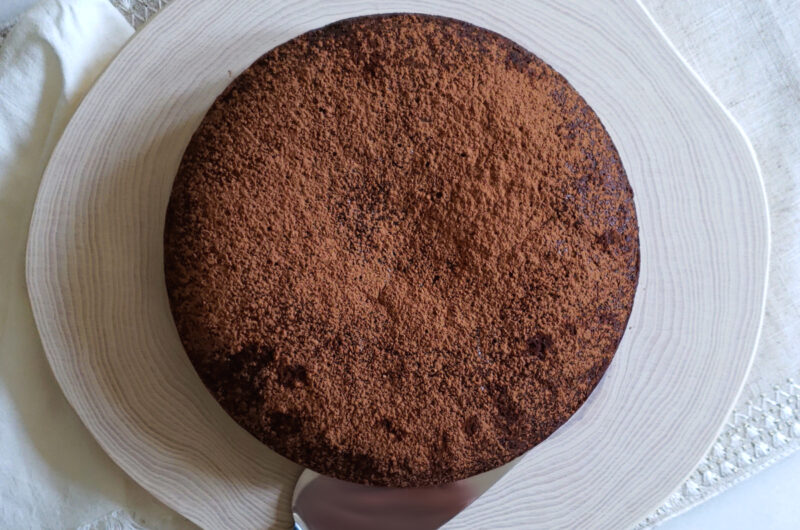This Decadent 10-Min Olive Oil Balsamic Chocolate Cake recipe is moist, delicate and delivers bold, rich chocolate flavor. It’s also vegan, but you won’t miss the eggs or butter one bit. This cake is simple, elegant and truly decadent.
It’s also flexible. Use a plain olive oil and balsamic vinegar for a traditional chocolate cake, or you can get creative with your flavors by using different flavor-infused balsamic vinegar and olive oils.
Jump to RecipeHow good can this Decadent 10-Min Olive Oil Balsamic Chocolate Cake really be?
Pretty darn good actually. When developing recipes, sometimes you must work a concept over and over and over once more before you get it right. Other times, you land on something pretty spectacular the first try. And this recipe for Decadent 10-Min Olive Oil Balsamic Chocolate Cake was one of those recipes that ended up being ready after the first attempt.
In the first round, I used a moderately-flavored olive oil and a plain red balsamic vinegar, which yielded a wonderful, moist and delicate chocolate cake. I chose a medium- to mild-flavor olive oil because I didn’t want the olive flavor to be too robust. Save the stronger stuff for dipping or savory dishes. Feeling confident with the ratios of the ingredients and the finished product, I decided to see what would happen when I experimented with different olive oils and balsamic vinegars.
I remade the cake a second time using the same olive oil, but this time I used a dark cherry balsamic vinegar my bestie had sent me for my birthday. I had drizzled it over some chocolate ice cream earlier in the week and loved the way the acidity cut through the sweetness of the ice cream. Cherry and chocolate are a classic combination. The cherry balsamic vinegar added another layer of flavor to this delicious and decadent 10-Min Olive Oil Balsamic Chocolate Cake. It was such a delightful boost of flavor, and the texture was still just as good as in the first round.
In round three, I experimented with both the olive oil and the vinegar. A little while back, my sister had shared with me a bottle of a blood orange-infused olive oil and a dark chocolate balsamic vinegar she had picked up on one of her excursions. She’s a true foodie herself, so you have to believe me when I tell you both were absolutely delightful. The bright citrus notes of the blood orange olive oil paired beautifully with the cocoa powder, and the added dark chocolate flavor of the vinegar just deepened the overall richness of the cake. Another delightful surprise!
Definitely give this recipe for Decadent 10-Min Olive Oil Balsamic Chocolate Cake a try, but also look for ways to make it your own. Try a raspberry- or fig-infused vinegar or a ginger- or walnut-infused olive oil. If the flavors of the olive oil and vinegar work with chocolate, they will work with this cake recipe. Just keep to the ratios and you’ll be fine.
Vinegar, baking soda and regular cocoa powder for a moist, delicate cake
Wait, what? Vinegar in cake batter. Yes! This recipe for Decadent 10-Min Olive Oil Balsamic Chocolate Cake calls for balsamic vinegar for two reasons. First for flavor. The balsamic vinegar helps balance the sweetness of this cake by adding a touch of acidity – which translates to another layer of complexity to the bake. But there’s another reason why vinegar is a modern-day baker’s new best friend. Vinegar also reacts with the baking soda and proteins in the flour to give this cake a lighter, fluffier texture. If you’re interested in learning more, Petra Wakefield, of Leaf, has a post dedicated to How to Add Vinegar to Make a Cake More Moist.
This chocolate cake recipe also relies on the interaction between the vinegar, baking soda and regular cocoa powder to assist with the rise on the cake. Baking soda is 100 percent sodium bicarbonate. When you add an acid and a liquid to baking soda, it works to neutralize the acids and creates air bubbles in the process. The balsamic vinegar and the water assume this role.
Baking powder is a blend of baking soda and an acid (usually cream of tartar). It only requires the addition of a liquid to kick its leavening capabilities into action. This is something I discuss further in my recipe for Super Tender 8-Ingredient Lemon Shortcakes, only in that recipe, the acid used is buttermilk. Baking soda is also three times stronger than baking powder. Since I wanted a quick, big lift on this cake, I used both the baking soda and vinegar to produce a light crumb and delicate texture.
In this recipe for Decadent 10-Min Olive Oil Balsamic Chocolate Cake, I also specifically call for regular cocoa powder over Dutch Process. There’s a reason. Regular cocoa powder is naturally more acidic – ranging between a pH of 5 and 6. The color of the cocoa powder can vary from quite vibrant and red to a darker brown, but generally this does not affect the taste. If you’re looking for a regular cocoa powder that is darker in color, I find the regular Ghirardelli cocoa powder provides good, dark color as well.
Cocoa powder that has been processed in the “Dutch Process” style renders the cocoa powder less acidic, bringing it to a pH of 7. The process of making the cocoa powder more alkaline, means it doesn’t react as well with the balsamic vinegar in this recipe. The end result to your bake is that it would not achieve the same lift as it would had you used regular cocoa powder. In a pinch, you can still use Dutch Process cocoa in this vegan chocolate cake recipe, but you won’t get as much lift out of the final bake. For best results, use regular cocoa powder in this Decadent 10-Min Olive Oil Balsamic Chocolate Cake recipe.
Simply dressed – the best way to serve this chocolate cake
Sometimes less is more. This Decadent 10-Min Olive Oil Balsamic Chocolate Cake is best served simply dressed. All that’s needed is a light dusting of powdered sugar or cocoa powder and some fresh fruit. At most, a dollop of whipped cream if you’re not worried about keeping it purely vegan. However, this cake is so moist and delicious, it really doesn’t need it.
Decadent 10-Min Olive Oil Balsamic Chocolate Cake
Course: DessertCuisine: VeganDifficulty: Easy10
servings10
minutes45
minute1
hourFor a basic chocolate cake, use regular olive oil and balsamic vinegar, or experiment with flavored oil and vinegar for a delicious twist! Depending on the size of your slices, this cake will serve 8 – 10 people.
Ingredients
1 cup water
1/3 cup olive oil (look for one that is medium to mild in flavor)
1 Tbsp. Balsamic Vinegar (you can also use a flavored balsamic if desired)
1 tsp. almond extract
1 1/2 cups A.P. Flour
1 cup white granulated sugar
1/4 cup unsweetened regular cocoa powder (not Dutch Process)
1 tsp. baking soda
1/2 tsp. kosher salt
Directions
- Preheat oven to 350 degrees F. Prepare an 8-inch cake pan by lining the bottom with parchment paper and spraying the sides and bottom of the pan with non-stick baking spray. Set aside.
- Whisk together the water, olive oil, balsamic vinegar and almond flavoring. Set aside.
- In a large capacity bowl, combine the flour, sugar, cocoa powder, baking soda and salt. Whisk together to combine the dry ingredients and break up any clumps.
- Add the liquid mixture to the dry ingredients and whisk together until a smooth batter forms. Pour the batter into the prepared cake pan and bake at 350 degrees F. for 40 – 45 minutes. The cake is done when a toothpick inserted into the center of the round comes out clean.
- Once finished baking, remove the cake from the oven and allow to cool in the cake pan for 10 minutes. After 10 minutes, run a paring knife around the edge of the cake and gently shake to loosen the cake from the sides of the pan. Invert the cake on a large plate and loosen the parchment away from the bottom of the cake layer. Invert the cake again so that the bottom is now resting on a cooling rack. Allow the cake to finish cooling for at least one hour before removing the parchment from the bottom and transferring the cake to a serving plate.
- The finished cake can be dusted with powdered sugar, cocoa powder and/or served with whipped cream and fresh fruit. Store covered at room temperature for up to 5 days.

